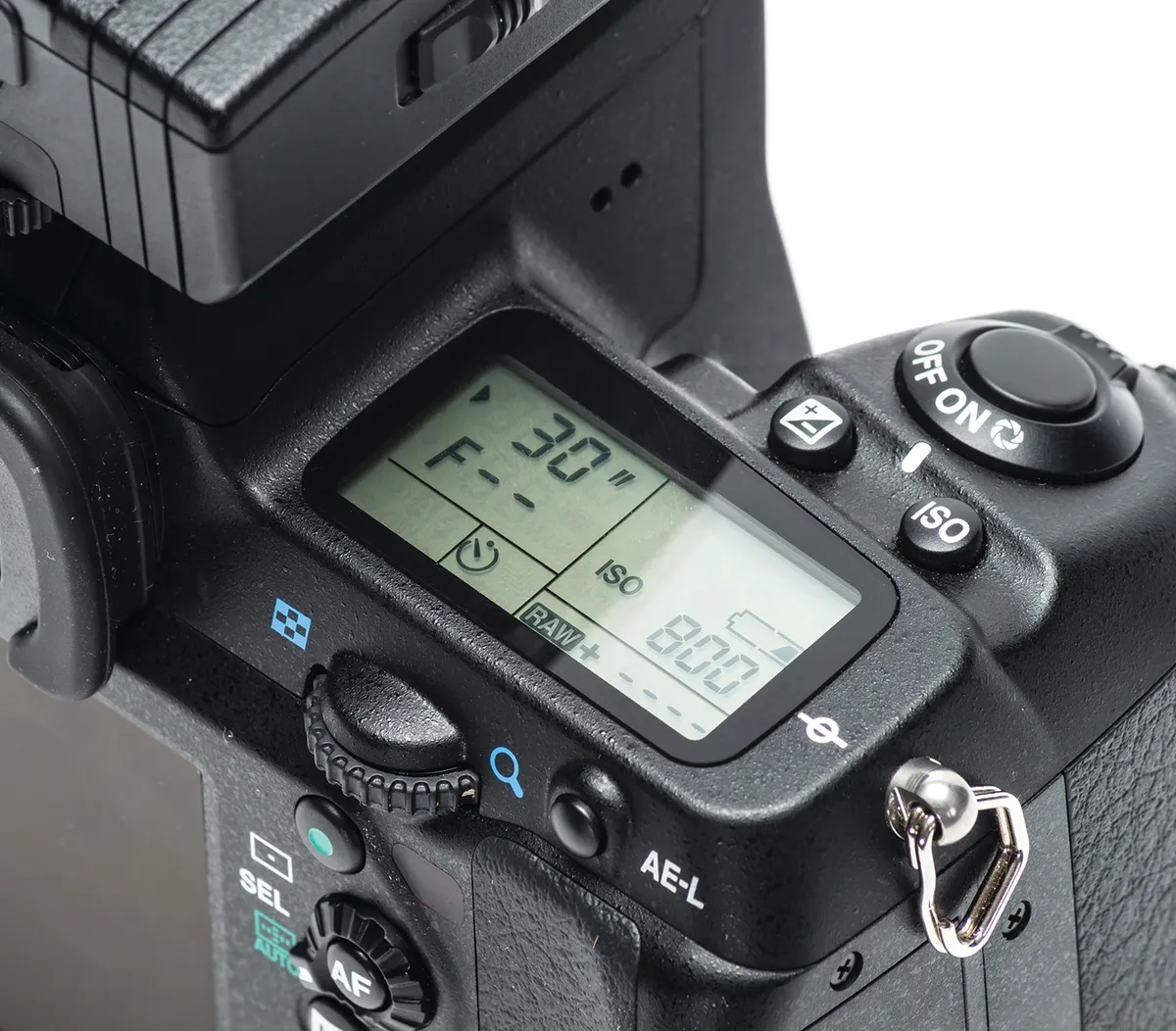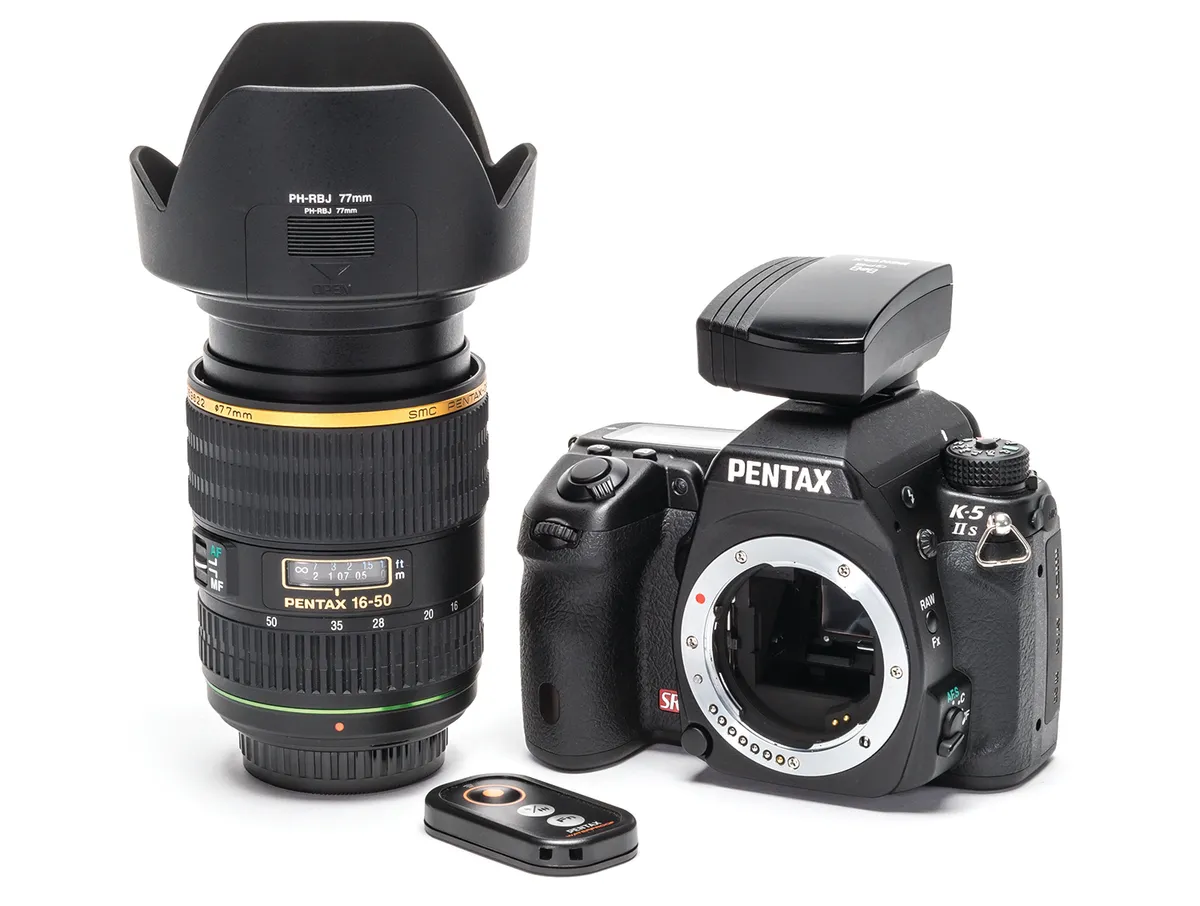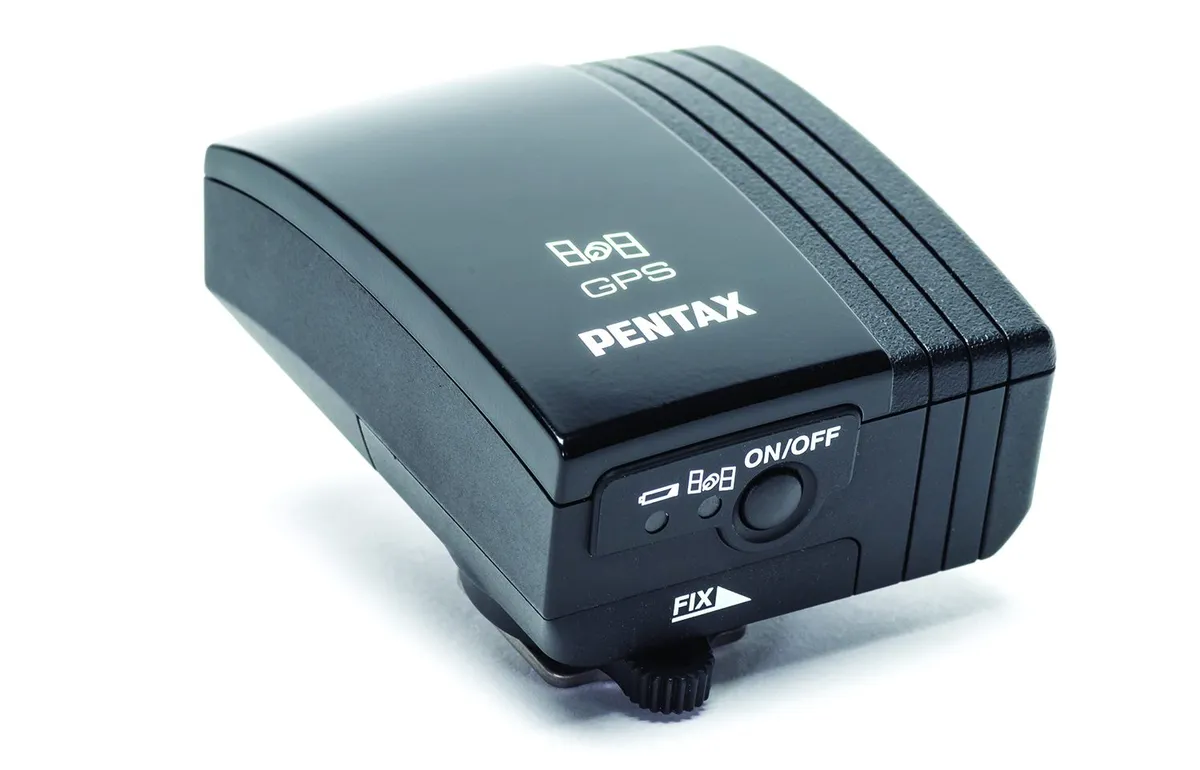In recent years a number of compact, portable products have appeared on the market as a solution for tracking the sky without the need for a bulky equatorial mount. Pentax’s offering is the Astrotracer O-GPS1 unit – a device that tracks the sky through a DSLR camera by physically adjusting its mirror.
The package we review here comprises Pentax’s flagship K-5 IIs DSLR camera body, a 16-50mm f/2.8 lens, a wireless remote control and the O-GPS1 unit.
After switching on the camera and GPS unit, the Astrotracer function is accessed via one of five submenus in the main shooting display. This is well explained in the manual.
With focus set to manual and exposure mode to bulb, we selected the ‘Astrotracer’ mode from the GPS menu. We then followed the ‘Precise Calibration’ procedure, which is crucial to enable the tracking function.
The display instructed us to rotate the camera body for 180˚ or more around the horizontal, vertical and lens axes. After 30 seconds or so an ‘OK’ message confirmed calibration was successful and defaulted back to the Astrotracer menu, where we set the exposure time.
Keep your DSLR in tiptop shape with our guide How to clean a DSLR camera.
Find out how to get the most out of your camera with our DSLR guide.
This camera is on our list of the best cameras for astrophotography.

Clicking the ‘Start Shooting’ field then prompted us to press the shutter release to initiate the Astrotracer and start the exposure.
With the supplied lens set to its widest at 16mm, we began with a one-minute exposure, gradually increasing to the ‘maximum trace duration’ of five minutes to see how well it coped at the extreme end of its tracking range.
We then switched to the longest focal length of 50mm and did the same. The supplied wireless shutter release button activates the mirror-up function and opens the shutter a few seconds later: a very useful feature to minimise camera shake.
After one minute the Astrotracer was coping well with tracking and after two minutes little tracking error was evident. However, in three-minute exposures the stars at the top and bottom corners appeared as trails, but peculiarly the centrally framed stars were still small points. Recalibrating the sensors failed to correct this.
Stars move larger distances across the sky the closer they are to 0˚ declination, which combined with the curvature of the wide-angle lens could explain the apparent trailing.
The five-minute exposure showed noticeable trailing in the centre and was much worse at the edge of frame. The Astrotracer appeared to have gone beyond its limit at this focal length.
Focusing on Orion, we repeated these tests with the lens at its longest focal length, 50mm. In one-minute exposures, stars were small points of light with good detail recorded in the Orion and Flame Nebulae, although on the right of frame there was a little ‘bloating’ of stars, which looked more akin to lens aberration than poor tracking.

The Astrotracer continued to do a good job after two minutes, with Orion standing out beautifully, although stars at the edge of the frame were beginning to trail.
In longer exposures the Astrotracer struggled to keep sync, with the stars appearing trailed right across the image frame at five-minute exposures.
Given that it only takes 10 seconds for stars to trail in photographs taken on a fixed camera with a 50mm lens, the Astrotracer is quite impressive in its ability to compensate for Earth’s rotation, even after two minutes.
It will appeal to those new to astro imaging, and for those on a budget it performs well enough for wide-field imaging to serve as an alternative to expensive standalone tracking platforms.
Equally, this is a clever piece of kit to have tucked away if you want to travel without lugging a tracking platform around. It should be noted that the Astrotracer unit itself can only be used in conjunction with Pentax DSLRs that have the magnet-driven Shake Reduction system, such as the K-5 IIs, K-5 or K-r.

From damping to tracking
The Astrotracer function is a great example of converging technology where one application gives rise to another: in this case the camera’s built-in shake reduction system, which uses magnetic and acceleration sensors to dampen vibrations during normal handheld photography.
Cleverly, the Astrotracer function is able to use information from these sensors to generate alignment data in three axes. When combined with GPS latitude data, it calculates the movement of celestial objects as Earth rotates.
Once activated it is able to physically move the camera sensor to compensate for this motion.
Although the range through which the sensor physically moves is small, it is still large enough to translate into relatively long exposure times without trailing, far longer than a camera fixed on a tripod can possibly achieve.
As such, it opens up a range of possibilities for travellers who are interested in astrophotography, but don’t want to be burdened with large pieces of equipment.
O-GPS1 Unit
Light and compact, the body of the GPS unit simply attaches to the hot shoe on top of the camera, requiring its own power source with a single AAA battery. It gives GPS positioning data on screen and can even be used as a navigation aid.
Lens
In optical terms the supplied lens performed adequately while wide open at f/2.8, with some aberration noticeable at the edges of the frame. You could also use manual lenses, but you will have to input its focal length data for the Astrotracer to function correctly.
Top display
An exposure countdown timer activates on the top display of the camera when the Astrotracer is enabled. The display has a bright green backlight, which you’ll need to turn off if you want to keep your night vision. The main menu needs to be accessed to toggle this on and off.
Sensor
The K-5 IIs uses a CMOS type APS-C format sensor with an ISO range from 80 to 51,200. We took test shots to check its sensitivity and noise handling at higher ISO ratings: this was good up to ISO 800. Noise crept in at ISO 1600, above which it became very noticeable.
Camera
The camera itself is lightweight, of good build quality and weather-sealed, with a sensor designed to perform well in low light conditions. The viewfinder gives 100 per cent coverage and we found the menu easy to navigate. With a firmware upgrade Pentax’s K-5 and K-r cameras can also support the GPS unit and Astrotracer function.
Vital stats
- Price Package £1,995; Astrotracer only £229.95
- Camera Pentax K-5 IIs DSLR
- Lens 16-50mm, f/2.8
- Camera sensor CMOS type APS-C
- O-GPS1 weight 61g including battery
- Tracking duration Up to five minutes
- Supplier The Widescreen Centre
- Tel 020 7935 2580
- www.widescreen-centre.co.uk
This review originally appeared in the March 2014 issue of BBC Sky at Night Magazine.